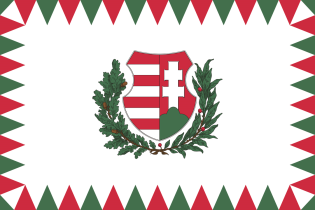National Republic of Hungary
The National Republic of Hungary, commonly known as Hungary, is a Legacy Nation located in the Deutscher Wald. It is a Regional Power, a member of the League of Nations, and a member of the Axis Powers.
History
Pre-First Scinfaxi War
Prior to the foundation of the Hungarian state, various peoples settled in the territory on Earth of what would become Hungary, including the Celts, Romans, Huns, Germanic peoples, Avars and Slavs. Hungarian statehood is traced to the Principality of Hungary, which was established in the late ninth century through the conquest of the Carpathian Basin. King Stephen I ascended the throne in 1000 and converted his realm to a Christian kingdom. The medieval Kingdom of Hungary was a European power, reaching its height in the Late Middle Ages.
After a long period of Ottoman wars, Hungary’s forces were defeated at the Battle of Mohács in 1526 and its capital Buda was captured in 1541, opening a period of more than 150 years where the country was divided into three parts: Royal Hungary (loyal to the Habsburgs), Ottoman Hungary and the largely independent Principality of Transylvania. The Ottomans recognized the loss of Ottoman Hungary by the Treaty of Karlowitz in 1699. Most of Hungary was reunited and came under Habsburg rule by the turn of the 18th century.
Wars of independence against the Habsburgs in 1703–1711 and 1848–1849 resulted in a compromise that established the Austro-Hungarian Monarchy in 1867, a major power in the early 20th century. Austria-Hungary collapsed after World War I, and the subsequent Treaty of Trianon in 1920 established Hungary's new borders, resulting in the loss of 71% of its historical territory, majority of its economy, 58% of its population, and 32% of its ethnic Hungarians. Reeling from the aftermath of the war, Hungary endured turmoil in the post Great War period, culminating in a nationalist conservative regime.
References
- "'British Spies and MI6' Behind Csepel Fleetyard Explosion, Hungarian Leader Claims". Champlain Group.
| Regional Powers of the Orion Arm |
|---|
